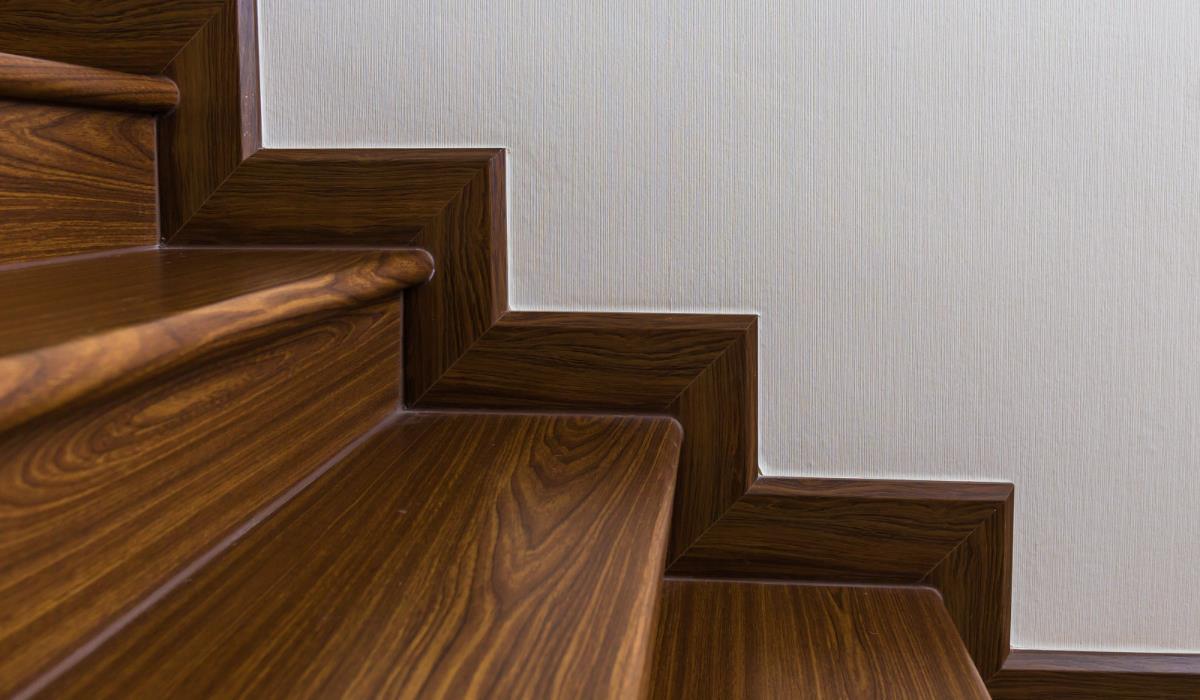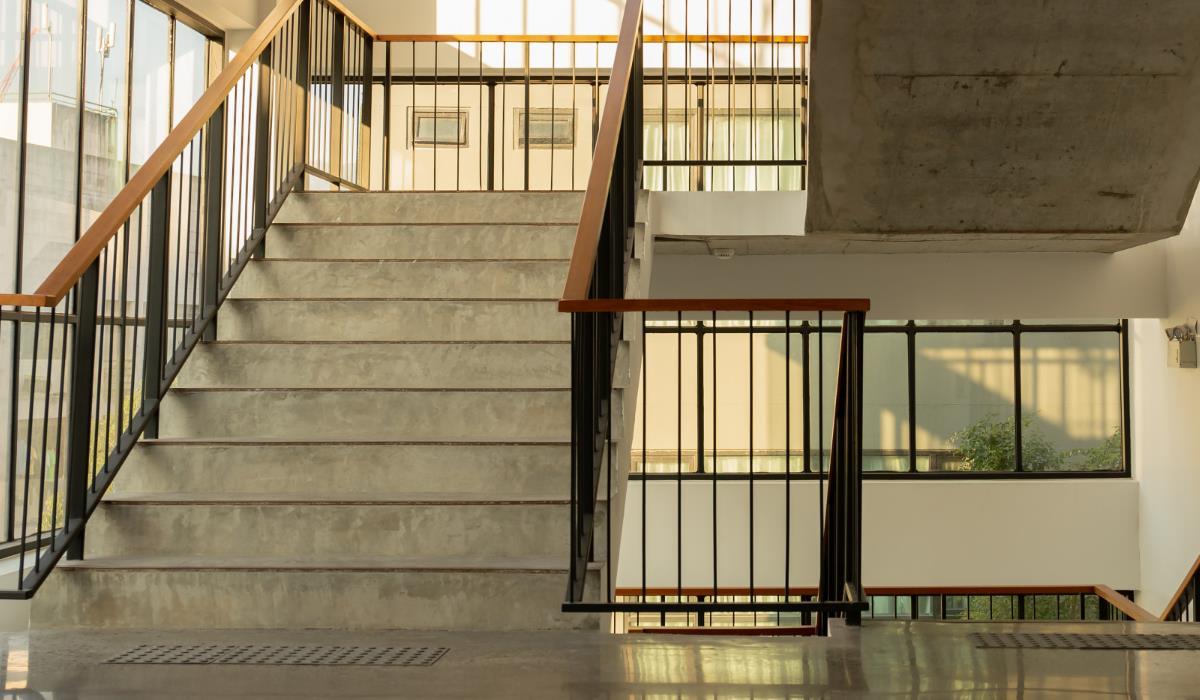Professional stair formwork is a key element in the process of building durable and safe reinforced concrete stairs. Correct execution of formwork ensures even distribution of the load, as well as precise finish and aesthetic appearance of the stairs. Before starting the construction of the stairs, we recommend consulting with experienced professionals. They have knowledge and skills in the field of formwork and the use of appropriate materials and techniques.
Construction of formwork for reinforced concrete stairs with straight flights can be easy and affordable for everyone. For this purpose, it is best to use boards with a thickness of 32 mm, supported about every 1 m. The boards should be placed parallel to the flight of stairs, creating a ramp with an angle of inclination corresponding to the angle of inclination of the flight of stairs. The stands also serve as a support for the horizontal formwork of the landing.
Boarding
To give shape to the individual stair steps, boards of at least 32 mm thick and of the appropriate width must be fastened to the stairwell walls. The width of the boards should correspond to the height of the steps. Formwork for winding stairs is more demanding due to their complicated shape. The lower surface of such stairs is curvilinear, so narrow slats or waterproof plywood are used to form it.
The boards that shape the individual steps of the winding stairs are fastened in a manner analogous to the boarding of straight stairs. This method of boarding the bottom guarantees an even thickness of the stair slab and an even surface of its bottom side. It should be noted, however, that some contractors simplify the process by shaping the underside of the stairs in a stepped manner. This practice leads to a significant variation in the thickness of the stair slab and an additional load of excess concrete. In addition, it causes an unsightly appearance of the underside of the stairs.
Stair formwork – costs

The first element that affects costs is the type of formwork chosen for the stairs. There are many different types of formwork, such as wooden traditional formwork, modular steel formwork or system formwork. Each of these types has its own characteristics and costs, which can vary significantly. Another factor that affects costs is the size and complexity of the stair design. The more complex the shape of the stairs, the more demanding and expensive the formwork can be. Stairs with unusual shapes, such as spiral or spiral, may require more advanced and specialized formwork solutions, which translates into higher costs.
In addition, the cost of formwork for reinforced concrete stairs depends on the time required to complete the work. Effective planning and work organization can help reduce time-related costs. Another important factor is the location and availability of materials and services. In some regions or countries, there may be differences in the prices of building materials and workers’ salaries, which affects the overall cost of formwork for reinforced concrete stairs.



